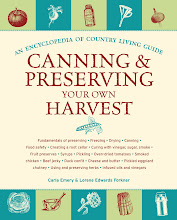Fact: The peanut is a bean, not a nut.
Fact: The chickpea is also a bean, not a true pea.
Fact: The soynut is the seed from a bean plant, not a nut.
Confused? I was too, until I took a little time to get to know the legume family—the large group of healthy and tasty foods to which all of the above belong.
Legumes are part of the family Leguminosae, or the “pea” family. Legumes all have clusters of fruit that matures in pods. Beans are actually just a small subgroup of this huge category. There are about 200 edible species of legumes cultivated worldwide, with about 1,500 different varieties from snap peas to lima and runner to lentil, soy and black-eye. There are so many different types of legumes that it is difficult to tackle them all in one post, but here are some key facts true of all legumes that can help to clarify what they are and why we should eat them!
Carla Emery says that legumes are incredibly important foods. And when Carla Emery says something is important, I listen. Here’s why:
- Since most of the common legumes are nitrogen fixers, they are great for renewing fertility in a crop rotation following heavy feeders, and they make perfect “green manure.” Till legume roots into your soil along with the leftover coffee grounds from the last post!
- They dry easily and store well under the simplest care, even increasing their protein value in storage.
- Together with a grain, they make a complete protein. So, after grains, beans are the most important food on the planet. So don’t neglect your beans, especially when grains are present in a meal.
A bit about combining beans and grains. All over the world beans are regularly eaten in combination with a grain, creating a complete protein combination essential to all human diets. Both grains and beans are good foods, but no bean or grain by itself contains all the amino acids necessary for human health, unlike meat and dairy (and mushroom) products. For example, corn is low in lysine and tryptophan, 2 essential amino acids. Beans are rich in lysine and tryptophan but lack zein, which corn can provide. So grains and beans together are as good as drinking milk or eating steak (an important detail for vegans or vegetarians to consider). But they must be eaten in the same meal for it to work. You get the same result with corn and bean stew (succotash), baked beans and bread, beans with barley or rice, beans and pasta, or corn chips and bean dip.
Besides providing you with a complete protein in a meal, legumes can have quite long-term health benefits, since consuming legumes regularly can reduce your risk of both heart disease and cancer. In fact, Carla Emery says that eating at least 5 servings of fruits and vegetables a day reduces you cancer risk by half.
For a healthy and tasty snack, try dipping corn chips in your own homemade hummus!
Hummus—made from the “garbanzo bean” (as it is known in Spain) or “chickpea” (in England). This legume is actually grown all over the world in warm climates and is prominent in national dishes from India, Italy, the Middle East and Latin America.
2 cups precooked garbanzos
1 garlic clove (or 5, if you boil them ahead for a milder taste)
¼ cup olive oil
¼ cup lemon juice
Puree garbanzos and garlic. Add olive oil and lemon juice. If it seems too thick or dry, thin by adding a little water. Chill before serving.
Change it up! Try adding sesame oil or tahini for a nuttier flavor. Or add roasted bell peppers or sun-dried tomatoes and spread on crackers or wheat bread for a perfect protein!








No comments:
Post a Comment